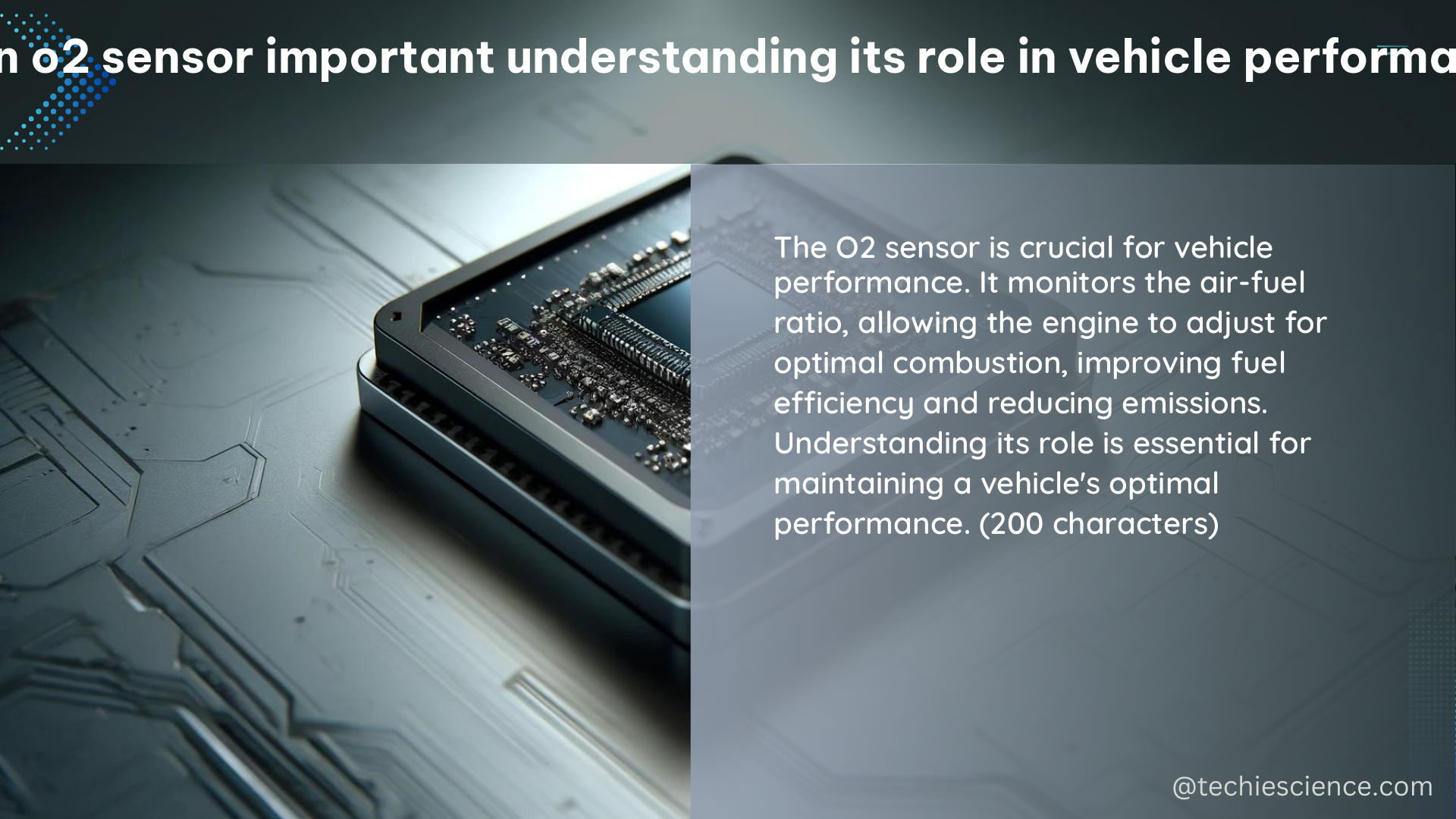An oxygen (O2) sensor is a critical component in a vehicle’s emission control system, playing a pivotal role in maintaining optimal engine performance. This sensor measures the amount of oxygen present in the exhaust gas, allowing the engine control unit (ECU) to precisely adjust the air-fuel mixture for complete combustion, thereby reducing harmful emissions and enhancing fuel efficiency.
Understanding the Technical Specifications of O2 Sensors
The technical specifications of an O2 sensor are crucial in determining its accuracy and lifespan. These specifications include:
-
Zero Offset: This parameter represents the sensor’s output voltage when there is no oxygen present in the exhaust gas. An ideal zero offset is 0 mV, but a small deviation is acceptable.
-
Stability/Drift: This refers to the sensor’s ability to maintain its output voltage over time, even as the exhaust gas composition changes. Stable sensors with minimal drift are preferred for reliable performance.
-
Linearity: This specification ensures that the sensor’s output voltage changes linearly with the oxygen concentration in the exhaust gas, allowing the ECU to make accurate adjustments.
The lifetime of an O2 sensor can be expressed in terms of the percentage of oxygen flowing through the sensor circuit. For instance, a sensor with a 500,000 %O2 hour life can last for several years, depending on the percentage of oxygen flowing through the circuit.
Narrow Band vs. Wide Band O2 Sensors

O2 sensors can be categorized into two main types: narrow band and wide band.
- Narrow Band Sensors:
- Measure the amount of oxygen in the exhaust gas
- Send a signal to the ECU to adjust the air-fuel mixture accordingly
-
Operate within a limited range of air-fuel ratios, typically around the stoichiometric ratio (14.7:1)
-
Wide Band Sensors:
- Have an additional O2 pumping cell that regulates the amount of oxygen present in the sensing element
- Can measure a much wider range of air-fuel ratios, from lean to rich
- Provide more precise control over the air-fuel mixture, allowing for better engine performance and emissions control
The Cost Considerations of O2 Sensors
The cost of an O2 sensor can vary significantly depending on the make and model of the vehicle. While some sensors may be relatively inexpensive, others can be quite pricey. It is essential to use high-quality sensors to ensure accurate measurements and prolong the sensor’s life, as the cost of replacing a faulty sensor can be substantial.
Troubleshooting a Failing O2 Sensor
When an O2 sensor fails, it can cause a range of issues, including:
- Check engine light illumination
- Poor fuel economy
- Rough engine idle or misfiring
- Sluggish engine performance
To troubleshoot a failing O2 sensor, follow these steps:
- Read any fault codes using a diagnostic tool to identify the specific issue.
- Check the resistance of the heater to ensure it is within the specified range.
- Inspect the electrical connector for any damage or dirt that may be affecting the signal.
- Use an oscilloscope to check the sensor’s signal at both idle and approximately 2,500 rpm engine speed.
The Importance of O2 Sensors in Maintaining Optimal Engine Performance
In conclusion, the O2 sensor is a vital component in a vehicle’s emission control system, playing a crucial role in maintaining optimal engine performance. By understanding the technical specifications, the differences between narrow band and wide band sensors, and the cost considerations, vehicle owners can ensure that their O2 sensors are functioning correctly, leading to improved fuel efficiency, reduced emissions, and a smoother, safer driving experience.
References:
- TiePie Automotive – Measuring a broadband oxygen sensor: https://www.tiepie-automotive.com/en/articles/oxygen-sensor-broadband
- Brake & Front End – Monitoring Emission Efficiency With O2 Sensors: https://www.brakeandfrontend.com/monitoring-emission-efficiency-with-o2-sensors/
- Maxtec – How O2 Sensors Play a Part in Ventilator Performance: https://www.maxtec.com/blog/blog/how-o2-sensors-play-a-part-in-ventilator-performance/
- Delphi Technologies – Making Sense of Sensors: The Oxygen Sensor: https://www.delphiautoparts.com/resource-center/article/making-sense-of-sensors-the-oxygen-sensor

The lambdageeks.com Core SME Team is a group of experienced subject matter experts from diverse scientific and technical fields including Physics, Chemistry, Technology,Electronics & Electrical Engineering, Automotive, Mechanical Engineering. Our team collaborates to create high-quality, well-researched articles on a wide range of science and technology topics for the lambdageeks.com website.
All Our Senior SME are having more than 7 Years of experience in the respective fields . They are either Working Industry Professionals or assocaited With different Universities. Refer Our Authors Page to get to know About our Core SMEs.